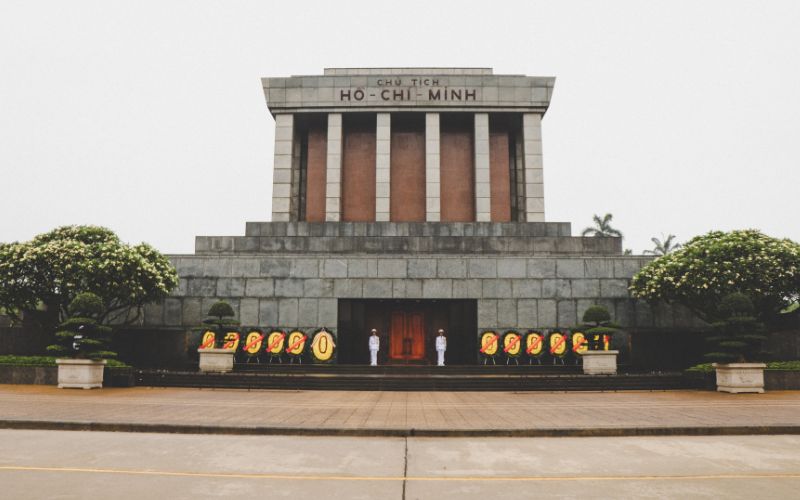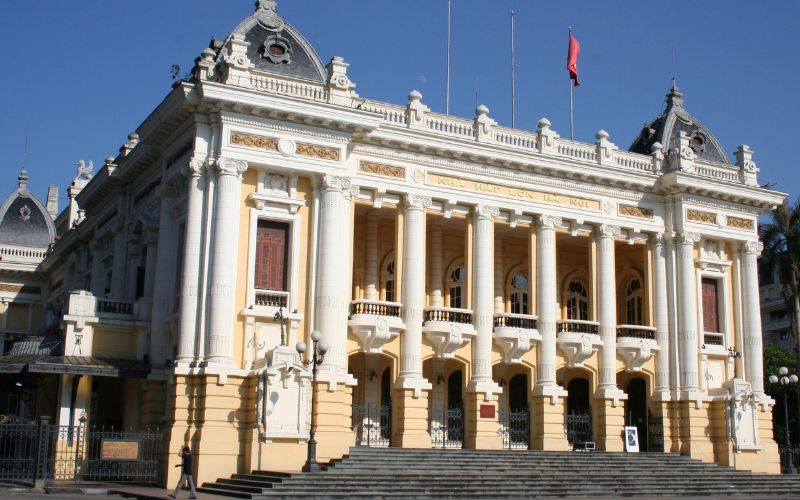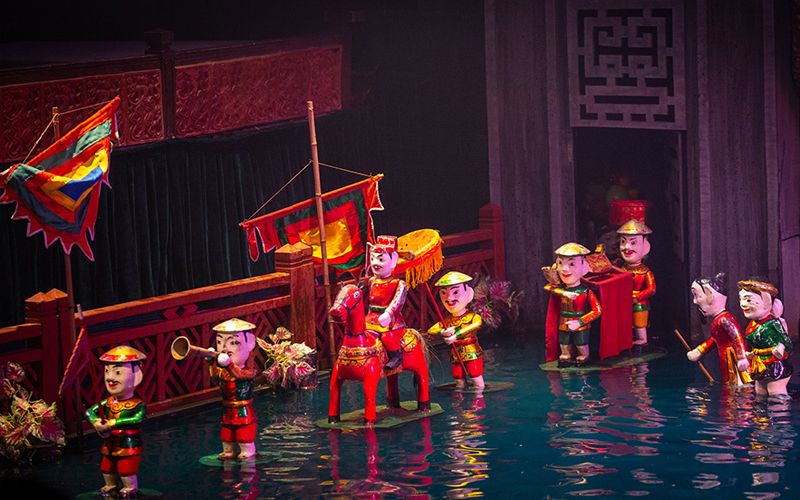Hanoi, the capital of Vietnam, is known for its centuries-old architecture and a rich culture with Southeast Asian, Chinese and French influences. At its heart is the chaotic Old Quarter, where the narrow streets are roughly arranged by trade. There are many little temples, including Bach Ma, honoring a legendary horse, plus Đồng Xuân Market, selling household goods and street food.
1. Ho Chi Minh Mausoleum
The Ho Chi Minh Mausoleum houses the tomb of the famous Vietnamese leader and former President of North Vietnam.
Founder of the Viet Minh, the Vietnamese Communist Party, Ho Chi Minh went on to fight for Vietnam’s independence from the Japanese. The site on which the Ho Chi Minh Mausoleum is located was where Ho declared independence from the Japanese in 1945. However, this was followed by a war with the French, after which Vietnam was divided. Ho Chi Minh became the leader of the communist North Vietnam.
Ho Chi Minh was still the President of North Vietnam during the Vietnam War, the notorious conflict between the USA and the North Vietnamese backed Vietcong which aimed to prevent the spread of communism.
2. Hoan Kiem Lake
Located right in the center of the capital of Vietnam, Hoan Kiem Lake Hanoi is famous for its peaceful beauty, its cultural as well as historical values.
Hoan Kiem lake, also known as “Sword Lake,” is a freshwater lake in the center of Hanoi. The legend about the name of the lake is known by all the Vietnamese people. Since they were small, they all learn about the story in their school about the most revered heroes, a giant turtle, and a magic sword. Hoan Kiem Lake in late spring.
3. Hanoi Opera House
Hanoi Opera House, located near the Hoan Kiem Lake is Hanoi, was built in 1911 by the French and mimics the Paris Opera House in its structure and interiors.
With its beautiful domes, pillars and balconies, Hanoi Opera House is a cultural and architectural landmark of the city. It can host a 600-member audience. Both Western classics and Vietnamese musicals are performed here by trained artists.
Mainly a monument designed for European culture, this attraction served as a center for theatre and classical music for the French colonial officials and their wives.
This historic building has organized several musical performances and also important official conferences, and it continues to do so today.
4. Hanoi Old Quarter
The Old Quarter is the name commonly given to the historical civic urban core of Hanoi, located outside the Imperial Citadel of Thăng Long. This quarter used to be the residential, manufacturing and commercial center, where each street was specialized in one specific type of manufacturing or commerce.
Another common name referring to approximately the same area is the 36 streets that used to make up the urban area of the city.







Comment (0)